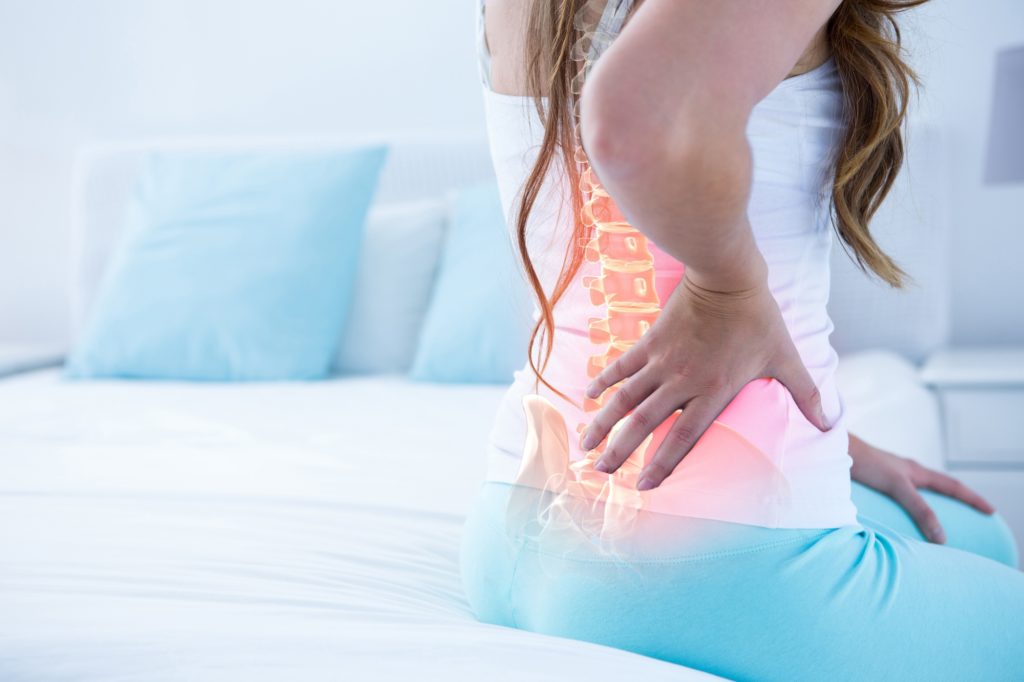
Do you suffer from chronic back pain?
You’re not alone! About 31 million people in the U.S. are suffering from back pain.
But before you can figure out how to treat it, you need to understand the cause. If you didn’t experience a specific injury, identifying the source could be a frustrating road to navigate.
Not to worry. We’ve narrowed down 7 weird reasons why you may be experiencing chronic back pain.
Let’s get right into it.
Weak Core
You may be wondering what your abdominal muscles, or lack thereof, could possibly have to do with your chronic back pain. Well, when we have a weak core, our bodies use other parts to do the heavy lifting, resulting in strain and even injury.
When your core muscles are weak, the first body part to compensate is usually the lower back since you can accomplish most of the same movements using those muscles instead of your core.
But you’ll pay for it later. You’ll find your back is more sore than usual after doing any kind of activity your core should have been taking the heat for.
There are several exercises you can do to strengthen your core and your lower back. When you make the muscles in those areas stronger, they’ll be less susceptible to injury or pain.
Try holding a plank for one minute per day or laying on your stomach and raising the opposite arm and leg at the same time.
If done consistently, over time you’ll notice the pain in your back lessen as you begin to activate both your core and lower back muscles when lifting items or bending over to reach things around the house.
Too Much Sitting
If you spend most of your day sitting down, it could be the cause of your back pain. You may not feel it while it’s happening, but while you’re sitting, your muscles can tense up and you can be pulling and straining in ways you don’t even realize until it’s too late.
Back pain as a result of sitting is one of the main reasons why ergonomic desks and workstations were developed. The point is to make sure you’re in proper alignment.
All of our muscles tie together somehow; everything is connected. As a result, sitting with your legs in a strange position can pull on your lower back, or sitting with your arms reaching out too far for a keyboard can strain your upper back.
If your job requires you to sit all day, there are a few things you can do. For starters, be sure you’re getting up periodically to walk around and stretch your body. You should aim to get up at least once an hour, if not more, for about five minutes at a time.
Next, you want to be sure your desk is set up to be as ergonomically correct as possible. This means ensuring your chair, computer height and keyboard distance all align in a way that feels natural and comfortable and prevents you from overextending in any direction.
Making these changes will help alleviate your pain so that you can get your job done without a problem.
Hamstrings
As we mentioned before, the muscles in our bodies are connected and having one thing out of whack can have a ripple effect. One of the most common examples of this is when tight hamstrings result in lower back pain.
Our hamstring muscles extend much farther up our bodies than we tend to realize, and they connect to the muscles that pull on our lower back when tight. So, tight hamstrings can have a direct correlation to an aggravated lower back.
To loosen your hamstrings and release the pain, you should stretch them out daily and even consider using a foam roller to break up some of the tension.
Endometriosis
Many women already experience lower back pain as one of the many frustrating symptoms of menstruation. But women who suffer from endometriosis, a condition in which the uterine lining grows outside the uterus, can actually deal with serious back pain as a result.
If you do suffer from endometriosis, you’ve likely noticed that your back pain is consistent and gets worse around the time of your period. If this is the case, talk to your doctor about options and express to him or her the chronic pain you’re experiencing.
House Work
Doing the laundry, emptying the dishwasher, vacuuming the floor–these all sound like simple, straightforward household tasks that shouldn’t take a toll on our body. But the truth is, if you’re doing these tasks consistently, you’re bound to pay a price.
Repetitive movements such as bending and lifting, even just briefly, can cause chronic back pain. If you find yourself doing these tasks multiple times per week, your body doesn’t have enough time to recover from the strain.
It may sound silly but you should consider giving your back a quick stretch before or after you do the housework so you can release the tension and relax the muscles you’ve just worked. You also may want to look into ways you can adjust the items in your home to prevent you from bending and lifting so much.
You may want to learn more about seeing a chiropractor or a physical therapist if the issues persist and stretching at home is not enough to see an improvement.
Kidney Stones
Because the kidneys are located so close to our lower back, many people confuse kidney pain with back pain. If you haven’t done anything to injure or strain your back and your pain comes on strong and out of nowhere, it may be your kidneys.
Kidney pain is also relentless and excruciating, so if you didn’t seriously hurt yourself, it’s not a back injury you’re dealing with and you should head to the doctor right away.
Sleeping in Odd Positions
This reason for back pain can fool us for a while since we don’t really know how we’re sleeping unless we have a bed-mate to tell us. There are a variety of positions which can be causing you to experience back pain during the day.
Ideally, you should be sleeping on your side with your knees bent. If it helps, you can place a pillow in between your knees to keep your hips from hurting when they’re stacked. You want to avoid sleeping on your back or stomach as it can make your pain even worse.
When you sleep on your stomach, there’s no way for your spine to stay aligned since you have to turn your head to one side and your legs may go in another direction entirely. This can result in neck and upper back pain.
End Chronic Back Pain Today
Now that you have an idea of what might be causing your chronic back pain, you can take the necessary steps to figure out the culprit and put a stop to it.
Remember that the problem won’t be fixed overnight so be patient and remain consistent with any healing treatments or routines you decide to implement.
Curious about more fascinating topics? Check out the health & wellness section of our blog today!

